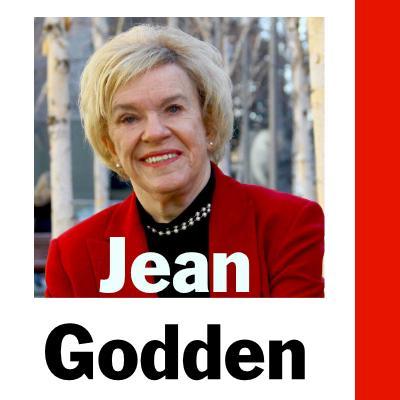Return of the Press Conference
Mon, 02/01/2021
By Jean Godden
Just hours into President Joe Biden's first full day in office, a great American tradition, was reborn. Jen Psaki (pronounced SOCK-ee) stood at the podium in the James Brady Briefing Room. The White House press secretary said she and President Biden wanted to "bring back truth and transparency" to the briefing room
She promised press briefings would be a daily thing on weekdays, but admitted "there will be times when we see things differently and that's OK. It's part of our democracy." She then reported on the first executive actions taken by the president and -- wonder of wonders -- took and answered questions from White House correspondents.
Psaki's press conference contrasted sharply with the first briefing held by Sean Spicer, President Trump's press secretary. Spicer maintained that Trump's inauguration crowd was "the largest ever." That was a falsehood -- or put more plainly -- a bald-faced lie. Presidential Counselor Kellyanne Conway defended the lie, calling it "alternative facts."
Following Psaki's first briefing, Dr. Anthony Fauci, Biden's chief medical adviser, stepped up to discuss the president's ambitious plans to vaccinate 100 million during his first 100 days in office. Fauci expressed relief at finally being able to speak out. He said he was joining an administration that bases actions "on science, not on politics."
Fauci's appearance underscored the welcome reality that regular press briefings are back. The press conference is the great American innovation. It serves much the same function as the "question period" in parliamentary systems. Although parliamentary question periods vary from country to county, oral questioning helps to hold governments accountable and unearth information that is relevant to citizens.
The tradition of U. S. press conferences evolved over time. Although President William McKinley first organized the press corps, it was President Woodrow Wilson who held the first press conference in March, 1913. Wilson had invited a few reporters to the White House for one-on-one discussions, but ended up facing 125 members of the press. Since then, successive U. S. presidents have observed and added to the tradition. First there were newspaper accounts, then radio and finally TV and internet.
It took President Trump to turn White House press conferences into something entirely different, almost unrecognizable. Sometimes Trump performed as a pitchman and ringleader, other times he used conferences to lash out at opponents and air grievances.
After Spicer departed, the press secretary's job fell to Sarah Huckabee Sanders, who served longest in the role, sticking to the party line and sometimes parroting false information. When Sanders resigned, Stephanie Grisham took over, serving nine months with nary a press conference. Meanwhile, her mercurial boss fumed over "false news" and infamously branded the press "an enemy of the people." Trump mostly relied on Twitter and occasional shouted exchanges on the White House lawn before boarding the presidential helicopter. During the election year, Trump repeatedly attacked opponent Joe Biden. He engaged in testy exchanges with reporters, targeting women correspondents whom he accused of asking "nasty" questions.
With the resumption of regular White House press conferences and briefings, there is much elation. There's hope the nation is returning to normal. Psaki is right that sometimes there will be disagreements in the briefing room. After all, the definition of "news" is something not previously known, in other words a good, juicy story. Reporters should serve as our surrogates and hold the Biden administration accountable, uncovering the facts, even those that don't reflect well on the president and all his men and women.


